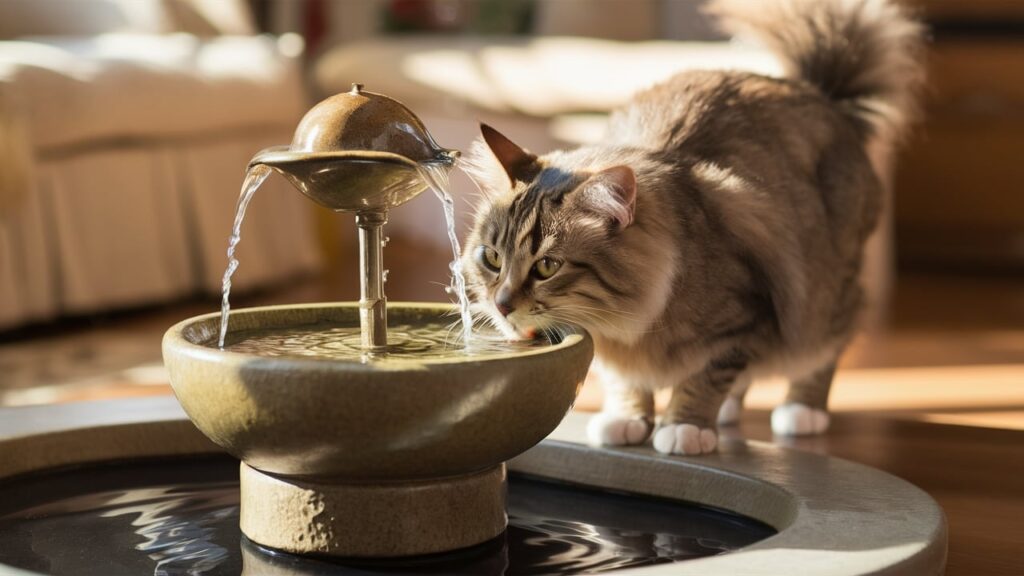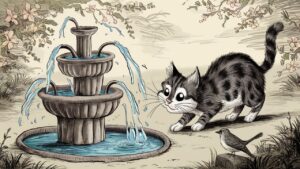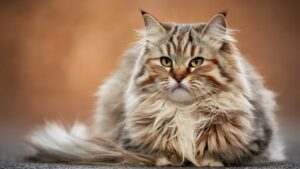Ceramic cat fountains offer aesthetic appeal and are often more affordable, while stainless steel fountains excel in durability and cleanliness. Both materials promote your cat’s health effectively.
Choosing the right cat fountain involves understanding the benefits of different materials. Ceramic fountains are often more visually pleasing and can fit seamlessly into home decor. They are also less prone to retaining odors and are typically easier to clean.
Stainless steel, on the other hand, stands out for its durability and resistance to bacteria, making it a practical choice for pet owners. Both materials provide fresh water for your feline friend, encouraging hydration. Ultimately, your decision may depend on budget, style preferences, and the specific needs of your pet.

Introduction To Cat Fountains
Cat fountains are great for keeping your feline friend hydrated. Proper hydration has many health benefits. It helps prevent kidney disease and urinary issues. Cats often prefer running water over stagnant water. This can encourage them to drink more.
Choosing the right material for cat fountains is important. Ceramic and stainless steel are popular choices. Both materials are durable and safe for pets. Stainless steel is often more sanitary because it resists bacteria. Ceramic fountains can be more attractive but may require more care to keep clean.
| Material | Durability | Sanitation | Cost |
|---|---|---|---|
| Stainless Steel | High | Excellent | Moderate |
| Ceramic | Moderate | Good | Varies |
Ceramic Cat Fountains
Ceramic cat fountains offer an aesthetically pleasing option with a smooth surface that’s easy to clean. In contrast, stainless steel fountains provide superior durability and resistance to bacteria. Both materials promote your cat’s hydration, but preferences may vary based on style and maintenance needs.
Pros Of Ceramic Fountains
Ceramic cat fountains are known for their attractive designs. They often come in various colors and styles, making them a great addition to home decor. These fountains are heavy, which prevents tipping and spilling. They are also less likely to retain odors compared to plastic. Cleaning ceramic is simple, as most are dishwasher safe. Many pet owners appreciate that ceramic is non-porous, reducing the risk of bacteria growth.
Cons Of Ceramic Fountains
While ceramic fountains have many benefits, they can be fragile. Dropping them may cause chips or breaks. They are also generally more expensive than plastic options. Some fountains may require frequent refilling if pets drink a lot. Lastly, ceramic can get slimy if not cleaned regularly.
Stainless Steel Cat Fountains
Stainless steel cat fountains offer durability and easy cleaning, making them a popular choice among pet owners. In contrast, ceramic fountains provide aesthetic appeal and can be more affordable. Both materials promote cat health, but stainless steel generally excels in longevity and resistance to bacterial growth.
Advantages Of Stainless Steel
Durability is one of the main benefits of stainless steel cat fountains. They resist rust and corrosion, making them last longer. These fountains are also easy to clean, which helps maintain a healthy drinking environment for pets. Stainless steel is resistant to bacterial growth, ensuring cleaner water for your cat. Their sleek design fits well with modern home decor, adding an attractive touch.
Disadvantages Of Stainless Steel
Some cats may find stainless steel less appealing than ceramic. The material can become cold, which might deter some pets from drinking. Additionally, stainless steel fountains can be more expensive compared to ceramic options. If not maintained properly, they may develop hard water stains, requiring more effort to clean.
Durability And Longevity
Ceramic and stainless steel cat fountains offer different advantages in durability. Stainless steel is known for its exceptional lifespan, often lasting longer than ceramic. On the other hand, ceramic fountains tend to be more prone to chipping if dropped.
Both materials are resistant to bacterial growth, but stainless steel has a slight edge. Regular maintenance is essential for both types. Stainless steel is easier to clean, while ceramic may require more careful handling. Overall, both can be strong choices for your pet’s hydration.
Hygiene And Cleanliness
Bacterial growth can be a concern in cat fountains. Ceramic and stainless steel materials are both popular choices. They are known for their hygiene and cleanliness. Stainless steel is more resistant to bacteria than ceramic. The smooth surface of stainless steel prevents bacteria from sticking easily.
Ease of cleaning is another essential factor. Stainless steel fountains are usually easier to maintain. They can be cleaned quickly with soap and water. Ceramic fountains might require more effort due to their porous nature. Regular cleaning helps keep your cat’s water fresh and safe.
| Material | Bacterial Resistance | Ease of Cleaning |
|---|---|---|
| Stainless Steel | High | Easy |
| Ceramic | Moderate | Moderate |
Aesthetic And Design
The visual appeal of cat fountains plays a significant role in your home. Ceramic fountains often come in elegant designs and vibrant colors. They can easily match your home decor and add a touch of style.
On the other hand, stainless steel fountains have a sleek, modern look. Their shiny surface can complement contemporary interiors. The choice between these materials depends on personal preference.
Weight and stability are crucial factors too. Ceramic fountains tend to be heavier. This weight helps prevent tipping and spilling. Stainless steel fountains are generally lighter but can also be stable if designed well. Both options provide a reliable water source for your cat.
Cost Considerations
Understanding the cost considerations of cat fountains is important. Ceramic fountains often come at a lower price, especially for smaller models. They can be a budget-friendly option for many pet owners.
On the other hand, stainless steel fountains tend to be more durable and can last longer. This durability may justify a higher price for some buyers. Choosing between these materials often depends on individual preferences.
Value for money can vary based on maintenance costs and longevity. While ceramic may require more frequent replacements, stainless steel may save money in the long run due to its durability.
Health And Safety
Concerns about chemical leaching are common with cat fountains. Ceramic and stainless steel are safer materials. They are less likely to release harmful substances into the water.
Many veterinarians recommend ceramic and stainless steel fountains. These materials are non-porous, making them resistant to bacterial growth. They are easier to clean and maintain.
Plastic fountains may pose more risks. They can leach chemicals and harbor bacteria. For overall health and safety, choose ceramic or stainless steel options for your cat’s fountain.
Making The Best Choice For Your Cat
Choosing the right cat fountain involves several important factors. Material plays a key role in durability and safety. Stainless steel is known for its long-lasting nature and ease of cleaning. It resists bacterial growth, making it a hygienic option for your pet.
On the other hand, ceramic fountains often come at a lower cost and are visually appealing. They can be heavier and may prevent accidental spills. Both materials can support your cat’s health by providing fresh water.
Owner experiences reveal that many prefer stainless steel for its durability. Some mention that ceramic can develop slime if not cleaned regularly. Ultimately, the choice may depend on your budget and your cat’s preferences.
Frequently Asked Questions
Is Stainless Steel Or Ceramic Better For A Cat Fountain?
Stainless steel cat fountains generally offer better durability and are easier to clean. They resist bacterial growth effectively. Ceramic fountains are often more affordable and aesthetically pleasing. Both materials promote healthy hydration for your cat. Choose based on your budget and preference for design.
What’s The Best Material For A Cat Water Fountain?
The best material for a cat water fountain is stainless steel. It offers durability, easy cleaning, and resistance to bacteria. Ceramic is also a good choice, providing aesthetic appeal and safety. Both materials promote healthy hydration for your cat. Choose based on your preferences and maintenance needs.
Is Stainless Steel Or Ceramic Better For Cats?
Stainless steel is generally better for cats due to its durability and resistance to bacteria. It’s easy to clean and less likely to harbor germs. Ceramic can be attractive and cost-effective but may chip or crack. Choose based on your cat’s needs and your preferences.
Do Ceramic Cat Fountains Get Slimy?
Ceramic cat fountains can get slimy if not cleaned regularly. Their non-porous surface helps reduce slime build-up compared to plastic. Regular maintenance, including frequent water changes and cleaning, keeps them fresh and safe for your cat. Choose high-quality ceramic for better hygiene and durability.
Conclusion
Choosing between a ceramic and stainless steel cat fountain ultimately depends on your preferences and your cat’s needs. Both materials offer unique benefits, from durability to aesthetic appeal. Prioritize what matters most to you, whether it’s longevity or design. A well-chosen fountain can significantly enhance your cat’s hydration and health.








